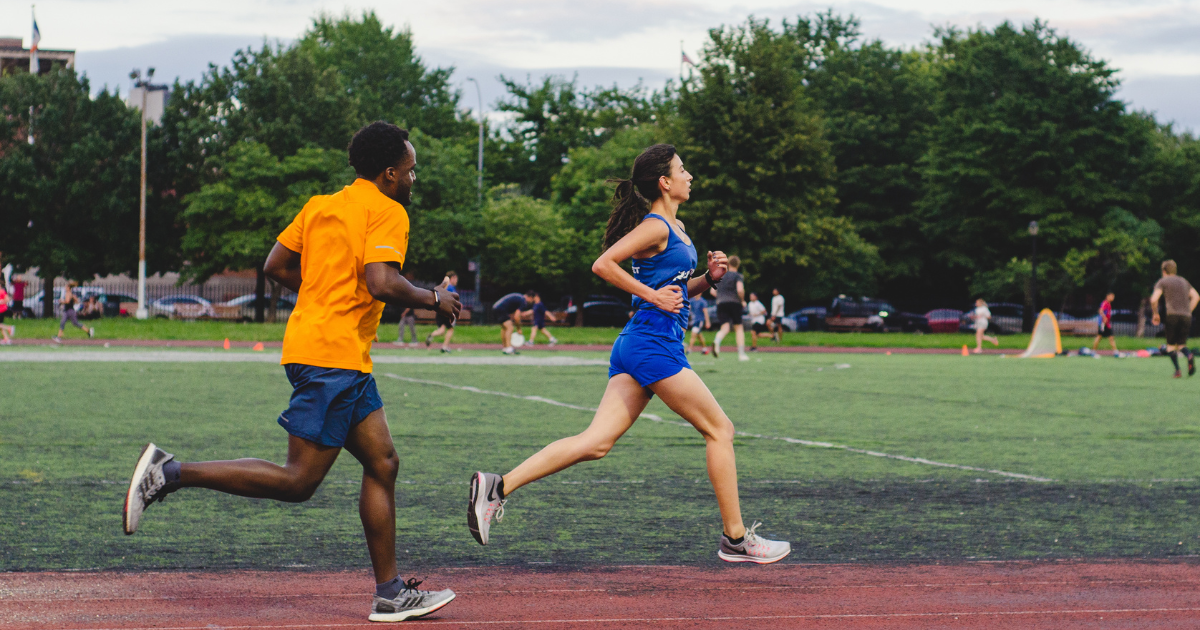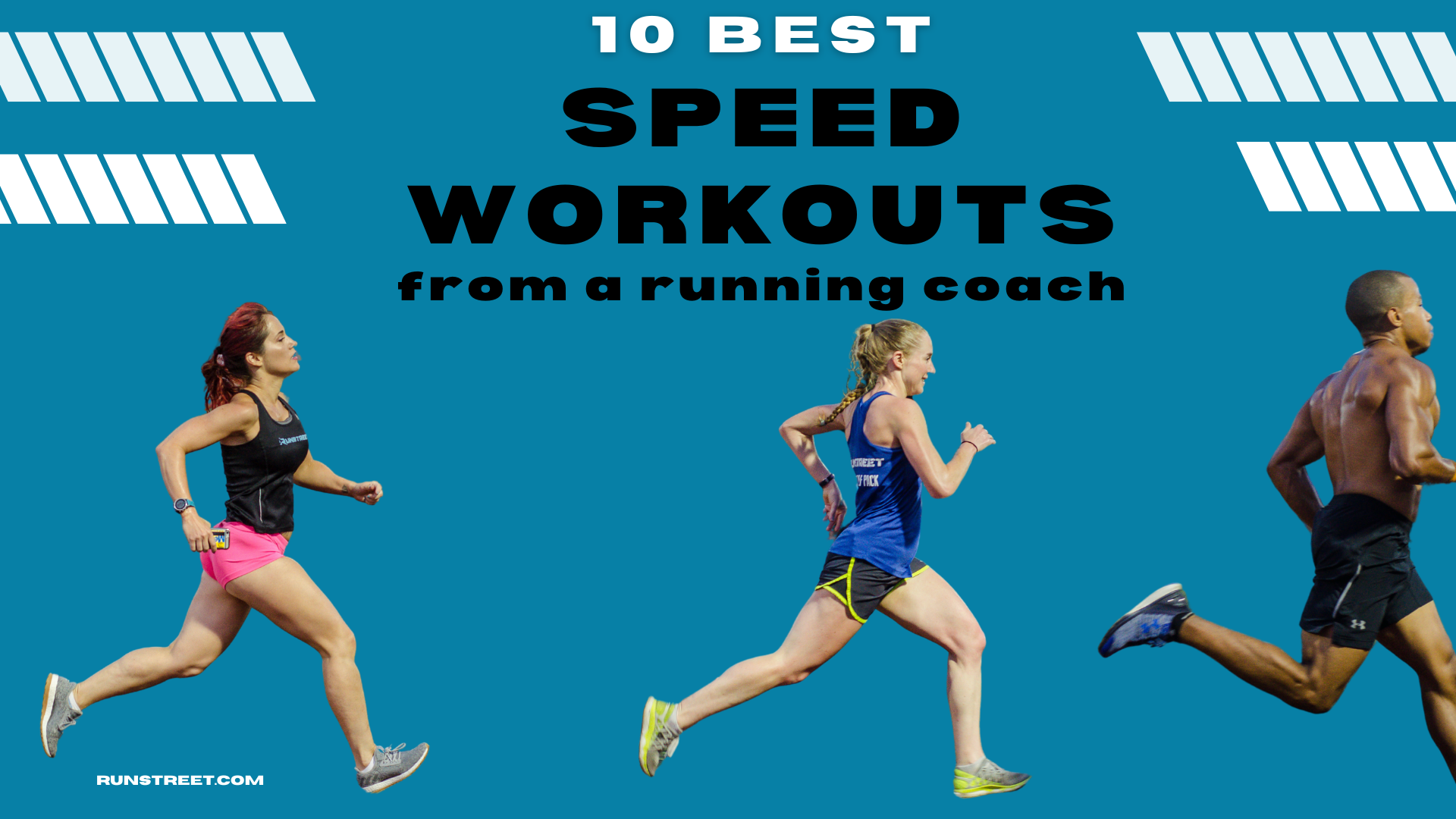What Is a Good VO2 Max? How to Improve Yours to Run Faster
By Marnie Kunz,
NASM-certified trainer, USATF- RRCA-certified run coach
If you’re wondering what is a good VO2 max for runners, this article will go over everything you need to know. As a running coach, I love helping people improve their speed, and VO₂ max is one way to measure progress for runners. VO2 max gives insight into your running ability to go fast for sustained periods. This guide explains VO₂ max, covers VO₂ max rates, and offers tips on how to boost your VO₂ max. I’ll give you ways you can measure your VO₂ max and offer some workouts to help you improve your VO₂ max and become a faster runner.
What Is VO₂ Max?
Before we determine what is a good VO₂ max, let’s go over what VO2 max is exactly. Basically, VO₂ max is a measure of your cardiorespiratory fitness level. Knowing your VO2 max can help you see your progress with training and determine how well you’re running.
In technical terms, VO₂ max is a measurement of the maximum amount of oxygen that your body can use during intense exercise. According to the Cleveland Clinic, VO₂ max is your oxygen uptake, which shows how much oxygen your body absorbs and uses while working out. Endurance athletes often use VO₂ max as a way to measure their running (or cycling) ability to go at a fast pace for extended periods of time.
For this article, we will focus on VO₂ max for runners, which is the maximum amount of oxygen your body can use while running. This is a way to measure the health and abilities of your lungs, muscles, and whole cardiorespiratory system.
How VO₂ Max Is Measured
VO₂ max is also known as maximal oxygen uptake or maximal aerobic capacity. VO₂ max is measured in milliliters of oxygen per kilogram of body weight per minute (ml/kg/min). V stands for volume, O2 is for oxygen, and max stands for maximum.
VO₂ max demonstrates how efficiently your heart pumps blood to your muscles and how well your muscles can use the oxygen from your circulating blood. Your VO2 max is influenced by different factors, including your genetics, age, gender, and fitness level. In general, the better your fitness level, the higher your VO2 max number will be.
A high VO₂ max means that you have a high level of fitness and can sustain intense running for longer periods of time than people with low VO2 maxes. For runners, this means you can run efficiently and push yourself to run fast in races for long periods.
Influences on VO2 Max
According to researchers, female athletes and male athletes at elite levels have similar VO2 max levels, but there are many factors that come into play. Body composition influences VO2 max, with athletes who have more muscle mass and less body fat demonstrating better VO2 max rates, in general. Hormones can also influence performance, and women often have lower iron levels, which decreases maximal oxygen consumption.
Improving VO2 Max
The good news is that VO₂ max can be improved through regular training. For runners, you can improve your VO2 max by doing speed workouts like high-intensity interval training and endurance runs. Speed training sessions like tempo runs, intervals, and fartleks will help you run faster and improve your oxygen efficiency.
I’ll offer my tips as a coach and trainer for improving your fitness level - and VO₂ max. But first, let’s look at how to measure your VO₂ max and calculate what is a good VO2 max.
How to Measure Your VO₂ Max
There are several ways to measure VO₂ max, but some of the most common ones include:
Treadmill test with special equipment. Doctors and scientists often use this method of measuring VO₂ max. Some physical therapists have the equipment for this as well. For the test, you run on a treadmill while wearing a mask that measures the amount of oxygen you’re breathing in and the amount of carbon dioxide you’re exhaling. The test gets progressively harder until you can no longer keep up, and your VO₂ max is calculated based on your maximum oxygen consumption. This is the most accurate way to measure your VO₂ max and can often be done at your doctor’s office or physical therapist’s office.
Manual calculations. For this method, you will need to measure your resting heart rate. Then, calculate your maximum heart rate by subtracting your age from 220. Plug your numbers into this formula to determine your VO₂ max: VO2 max = 15 x (HRmax/HRrest). The units for measuring VO₂ max are milliliters of oxygen per kilogram of body weight per minute (mL/kg/min), so your final number will be in this format.
Fitness tracker. This is the most easily accessible method for most people to get an estimate on their VO₂ max. It is not as accurate as the medical treadmill test but will still give you a good idea of your VO₂ max. Some fitness trackers - such as many Garmin watches - have sensors that can estimate VO₂ max based on your heart rate variability, resting heart rate, and other factors. If you use a Garmin, most devices will give you your VO₂ max number from each workout (note you should run or walk for at least 10 minutes during your workout to get an accurate estimate). You can see your VO₂ max displayed on your Garmin device or when you log in to Garmin Connect. If you’re logging into Garmin Connect on the web, select Reports and VO₂ max to see your score.
What Is a Good VO2 Max?
Determining what is a good VO2 max score depends on several factors, including your age, sex, and fitness level. Here are some VO₂ max numbers from the Cleveland Clinic that can help you determine how you stack up in the VO₂ max department:
For men ages 18 to 45, the average VO₂ max of a sedentary person is 35-40 mL/kg/min, and 42.5-46.4 mL/kg/min for an active person. Very active men and elite athletes will have VO₂ max scores up to 85 mL/kg/min.
For women ages 18 to 45, the average VO₂ max for a sedentary person is 27-30 mL/kg/min, and a good VO₂ max for an active woman in this age group is 33.0-36.9 mL/kg/min, with very active women such as ultra runners and elite athletes having scores up to 77 mL/kg/min.
Also, note that VO₂ max is just one way to measure your fitness, and many other factors contribute to your overall health and well-being. See our article on the Garmin Body Battery for another way to measure your health and well-being.
How to Improve Your VO₂ Max
If you’re a runner, now that you know what is a good VO2 max for active people, you may want to improve your VO₂ max so you can run faster and go longer without fatiguing in races.
Here are some ways to improve your VO₂ max:
Running and walking for endurance: If you’re a beginner or just starting to exercise regularly, the most effective way to boost your VO₂ max is to do regular cardiovascular exercise, such as running. Aim for consistency in your running, and get at least 75 minutes of vigorous activity (such as running) or 150 minutes of moderate cardio - such as walking or hiking - per week. As you build your fitness base, your VO2 max will increase.
Speed training: Speed workouts are the best way to improve your VO2 max when you already have a fitness base from running regularly. Do speed workouts such as tempo runs and interval workouts. Interval workouts involve alternating periods of high-intensity running with periods of recovery or slow running. Do 1 to 2 speed workouts per week to raise your VO2 max. See the Runstreet Training Center if you need a customized running program with speed workouts designed just for you.
Keep pushing: Gradually add intensity and new challenges to your workouts to improve your VO₂ max. Beginners will notice an improved VO₂ max more quickly than longtime runners because once you reach a certain fitness level, it’s harder to improve your VO₂ max. Speed workouts are a great way for intermediate runners to improve VO2 max.
Benefits of Improving Your VO₂ Max
Improving your VO₂ max can help you run faster in races, and you’ll be able to run for longer without getting tired. Boosting your VO₂ max also offers health benefits, including:
A longer lifespan
Improved mood
Better sleep
Reduced risk of stroke and chronic diseases, including cancer, diabetes, and heart disease
I hope this guide has helped you determine what is a good VO2 max for you and offered insights into ways to improve your VO₂ max. For more articles with specific speed workouts, check out our Runstreet Speed section. And if you need a training plan designed by a running coach and trainer, head over to the Runstreet Training Center.
Follow and tag @Runstreet on Instagram for more fitness inspiration and to get cheered on in your workouts. Happy running to you! 😊
Related Posts: Garmin Running Workout Guide, Recommended Steps Per Day By Age: A Complete Guide
Marnie Kunz is a NASM-certified personal trainer and USATF- and RRCA-certified running coach based in Brooklyn, NY. Marnie likes helping people get and stay active to enjoy a better quality of life. When she’s not doing fitness things, Marnie enjoys exploring with her dog, a mischievous rescue Akita.





